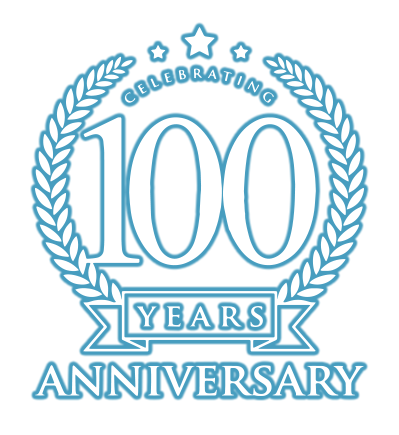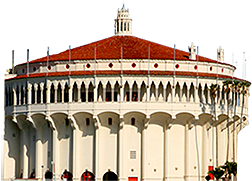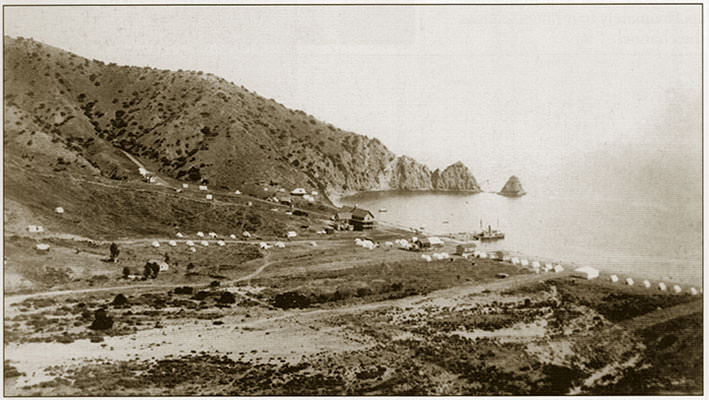
The first vision of Avalon as a resort destination began in 1887 when the island was purchased by a businessman named George Shatto from Grand Rapids, Michigan. The island had been inhabited by Native Americans for more than 7,000 years before it was first discovered by Europeans in 1542 when Juan Rodriguez Cabrillo named it San Salvador and claimed it for Spain. The island was given its present name 60 years later by another Spaniard, Sebastian Viscaino. It came under Mexican rule in 1822 and Thomas Robbins was awarded the island in a land grant in 1846. In these early years the island was used for ranching, mining, and was even taken over by the Military during the civil war. After the war, Catalina Island was mainly populated by a few well established ranchers until 1887 when the trajectory of the island would make a dramatic shift into how we know and love it today.
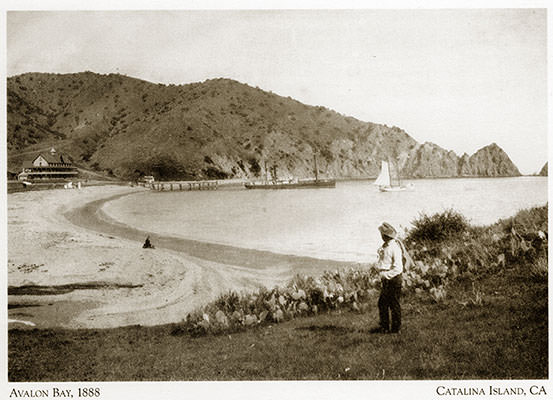
George’s dream to make Avalon into a vacation destination soon became a reality when the original Hotel Metropole and steamer wharf were constructed. Real estate was auctioned off and the first tourists began to arrive. He purchased the SS Ferndale steamship to transport passengers to Avalon. The ship traveled to Avalon once a day and took about 4 hours to cross the channel. Those who didn’t stay at the hotel would pitch a tent on the beach, providing affordable lodging on the island. The town began to grow into an emerging resort community, but George Shatto fell into financial troubles in 1891 and lost ownership of the island.
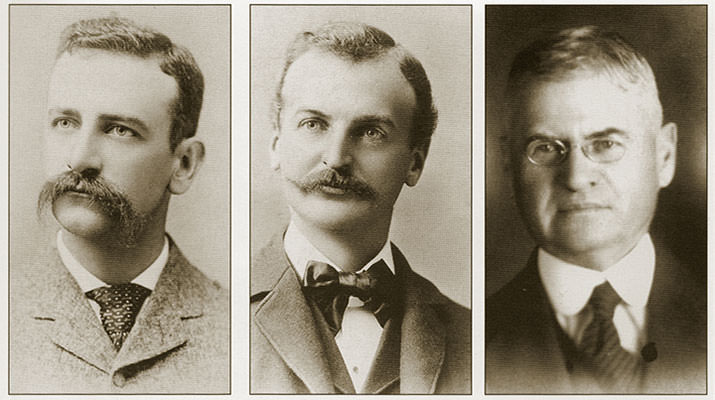
Catalina Island was purchased by the Banning brothers of Wilmington, California, who were already well known for transportation and development in Southern California. As owners of the Wilmington Transportation Company, the Banning Brothers had provided much of the Catalina cross-channel transportation for years. They had watched the island grow in popularity and saw an amazing opportunity to take Avalon to new heights as a vacation destination. They immediately began several construction and improvement projects, including a dance pavilion, additional amenities to the Hotel Metropole, and cement sidewalks.
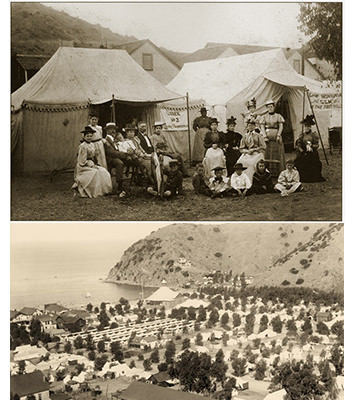
During the 1890s approximately 100 tents would be rented each summer, and this number grew steadily after the turn of the century. Renting for about $7.50 per week, life in “Tent City” included beds, bedding, basic furnishings and basic cooking facilities. Lively card games were common after dinner.

Herbert Dewey Mac Rae moved to Catalina Island in 1906 and was the accountant for the Banning Brothers. This photo shows 3 generations of Mac Rae’s circa 1914: John Ann (1841-1927), Herbert Dewey (1872 – 1931), and Margaret May “Peggy” (1914 – 1985). The Banning Brothers continued to make improvements throughout Avalon. New buildings, hotels, amenities, and tours popped up around town and their investment in the island was really beginning to pay off.
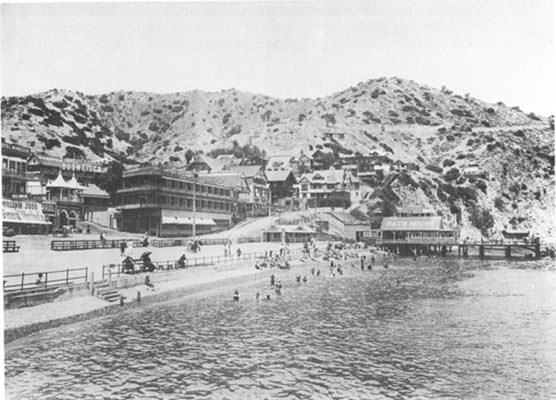
Avalon development prior to the 1915 fire. Shown in this photo are the Bath House, The Hotel Windsor, the Grandview Hotel, the Anheuser-Busch & Budweiser Cafe, and William Judd’s store. The fire that started near, and destroyed, the Hotel Metropole also took nearly every building in this photo.
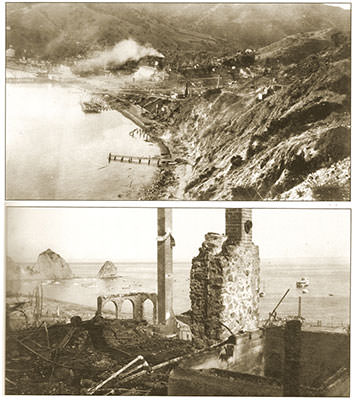
In the early morning hours of November 29, 1915 a fire started near the Hotel Metropole and, by sunrise, nearly half of the town’s building and homes were destroyed. The small volunteer fire department was no match for the fire. Avalon lost 6 hotels that night, as well as the Pilgrim Club, Grill Café, Tuna Club, Bath House, and nearly every home between Whitley Avenue and Hill Street. The town burned and smoldered for three days. The damage was estimated to be more than $2 million, but the town and the Banning Brothers were determined to rebuild.
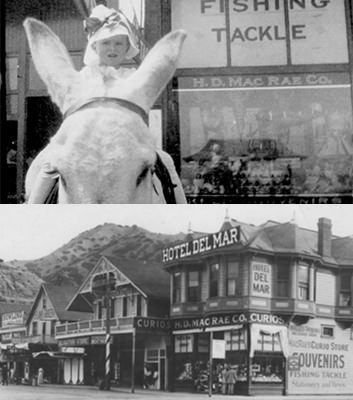
This picture of Crescent Avenue, taken prior to 1919, shows that Herbert Dewey Mac Rae had a shop on the corner of Crescent and Sumner Avenues where the drug store is today. The H.D. Mac Rae Curios shop advertised a Circulating Library, Indian Baskets, Navajo Blankets, Wireless Telegram, Souvenirs, Fishing Tackle, Stationery and News. The young lady on the mule in front of the shop is our grandmother, Peggy Mac Rae. Note of interest - the two buildings just to the left of this shop and the Hotel Del Mar are located where the Hotel Mac Rae stands today.
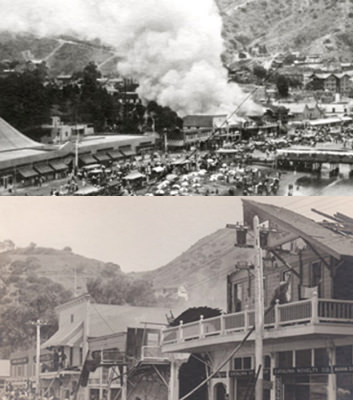
On August 29, 1919, this fire at Lefavors Department Store destroyed the buildings that were located where the hotel is today. Despite their best efforts to recover from the devastating 1915 fire and World War 1’s effect on tourism, the Banning Brothers decided to sell the island to William Wrigley, Jr. of the chewing gum fame. Before they sold the island, they asked their employees if they wanted to buy any land. H.D. Mac Rae jumped at this opportunity and bought the two lots that were destroyed by this 1919 fire and built the Hotel Mac Rae in 1920.
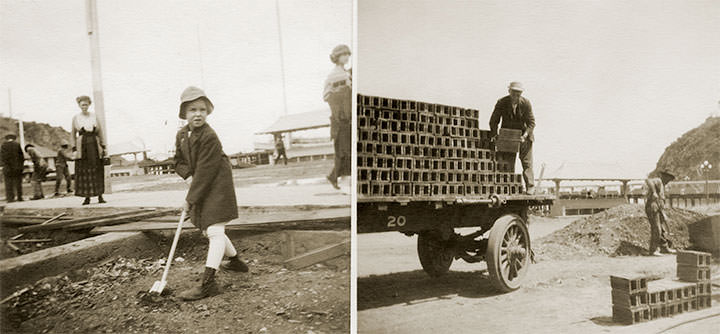
Mindful of the recent fires in Avalon, H.D. Mac Rae built the Hotel Mac Rae out of the hollow clay tile seen in this picture. Peggy Mac Rae is seen breaking ground for the new hotel in 1920, with her mother looking on in the background. By using the clay tile instead of wood, our great-grandfather advertised the hotel and the “1st Fire Proof Hotel” in Avalon.
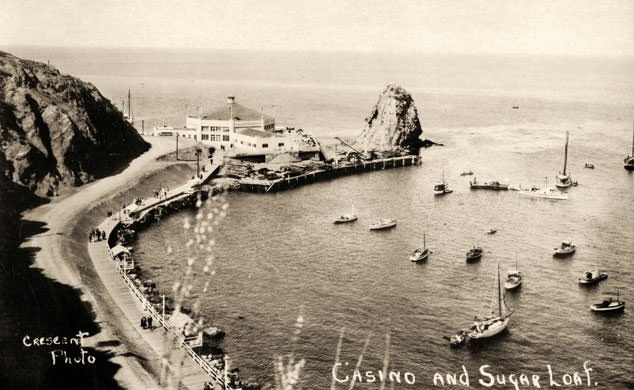
Also in 1920, the large rock point inshore from Sugarloaf was removed and the 90’ wide by 45’ high Casino Pavilion seen here was erected. That original pavilion remained until 1927 when it was removed to make room for the present day Casino building. The steel skeleton of the original pavilion was then erected at the Bird Park to become part of the world’s largest aviary. The Bird Park once housed 6500 exotic birds from approximately 1930 to 1966. The Park was then closed and the birds were transferred to the Los Angeles Zoo. The original pavilion skeleton is still at the Bird Park today, but it is no longer an aviary.

Celebrating the 4th of July on the beach in Avalon in 1921. The brand new Hotel Mac Rae stands proudly in the background. The H.D. Mac Rae Curios Shop is still on the corner.
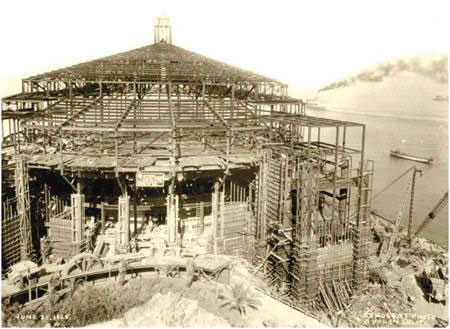
In 1928, the original Sugarloaf dancing Pavillion was moved to Bird Park where it remains today. The current day Casino was then re-built in 1929 to accommodate more people. The casino has been host to it all - motion picture premieres, the hottest big bands of the day, live radio broadcasts, celebrities, USO shows and more.
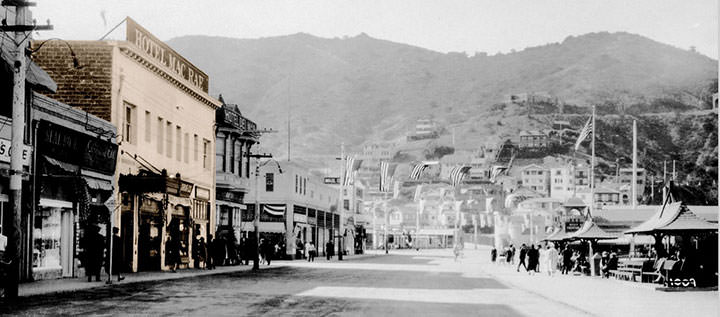
Crescent Avenue circa late 1920s to early 1930s. Note the now larger Hotel Mac Rae sign on the top of the building. Also of interest is the decorative metal awning over the hotel entrance and the flags across the avenue. The H.D. Mac Rae Curios Shop is still on the corner. The Mac Rae family remembers excellent Corn Clam Chowder from John’s Cafe on the far left of this photo. At the very far end of the street is a sign above a building that reads “Saddle Horses”.
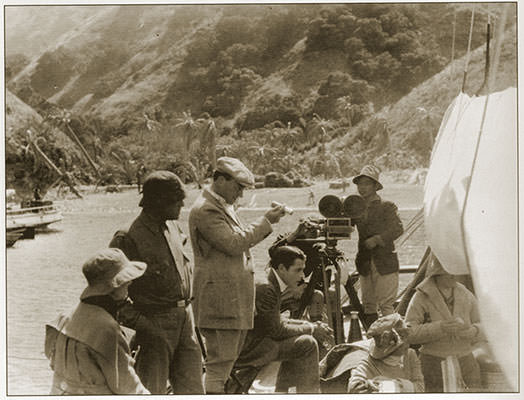
1930s- Catalina Island was quickly adopted by early Hollywood filmmakers and stars, and served as a backdrop for more than 200 motion pictures. The Bison that roam the interior today were left on the island after filming one of those pictures.
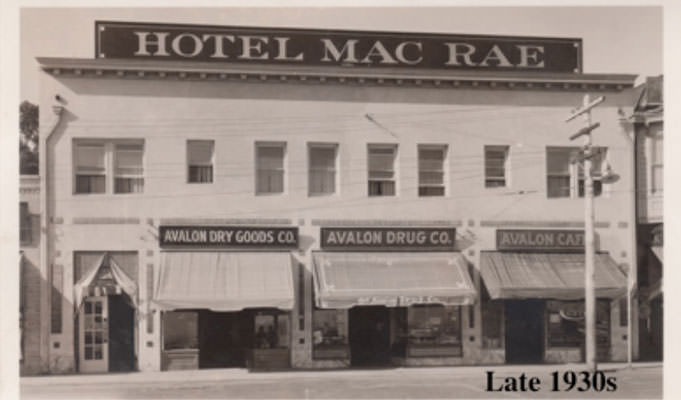
A frontal view of the hotel in the late 1930s. Notice the telephone poles and wires in front of the building.

All tourism stopped December 23, 1941. The War took over Catalina from 1941 - 1945. Like many islanders, Peggy took her family to the mainland. This infantry troop is marching down Crescent Avenue on Memorial Day, 1942. The Hotel Mac Rae was just to the right of this shot.
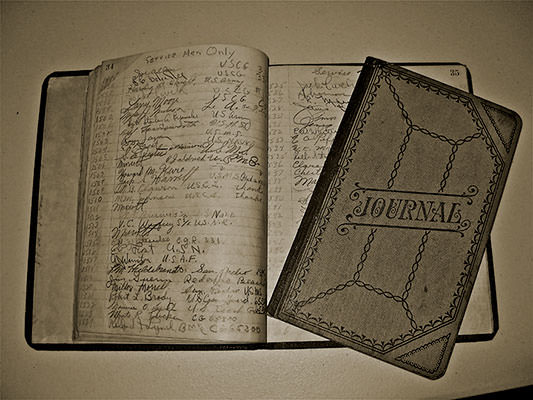
While other hotels were charging the servicemen 50 – 75 cents to take a shower, Peggy instructed her staff to allow them to take showers for free...if they signed her book.
She got 1785 signatures.
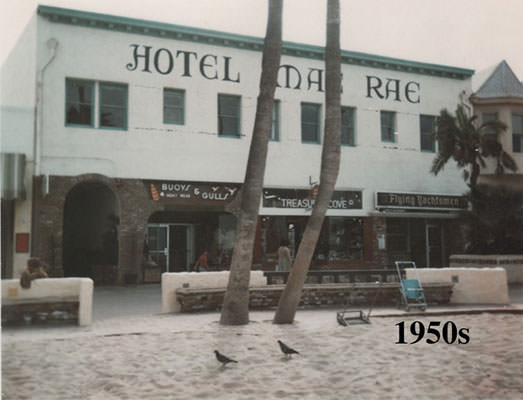
The hotel name is now painted on the top of the building, like it is today. New businesses are now leasing the shops below the hotel. All of the wires on Crescent St. are now underground and Palm trees and the Serpentine sitting wall are now present.
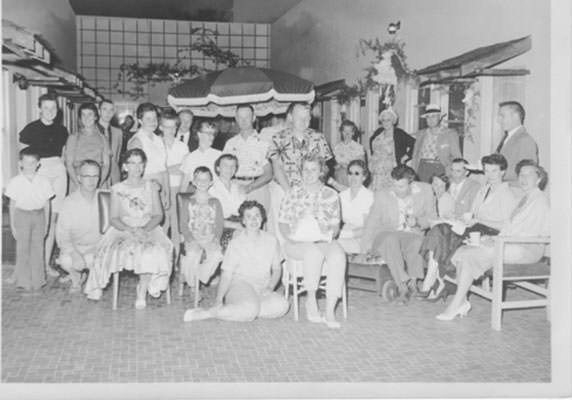
Peggy is sitting just to the right of her daughter, Helen, at Helen’s wedding party in the Hotel Mac Rae courtyard in 1957.
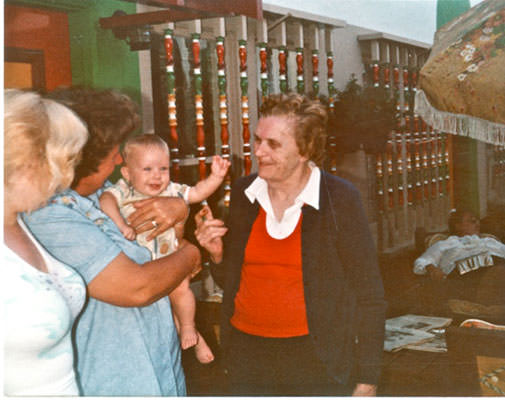
Four generations of the Mac Rae family in the Hotel Mac Rae courtyard for Helen’s 25th wedding anniversary.
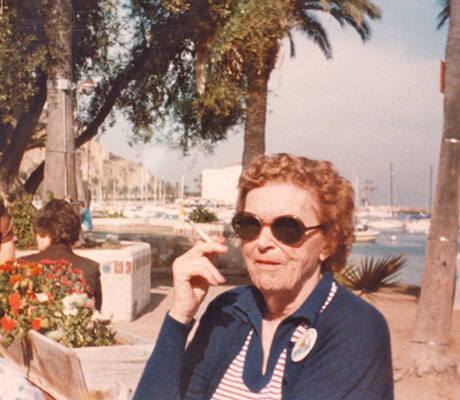
Our favorite, and most quintessential photo of Peggy Mac Rae. She had grown up in the hotel, attended USC, and then raised her children in what are rooms 211 and 212 now. She was a resourceful woman and managed to add 8 rooms onto the back of the hotel and furnish all rooms with their own bathroom. If you knew our grandmother Peggy, then you will remember her sitting on the Serpentine wall with a cigarette, in front of her hotel.

